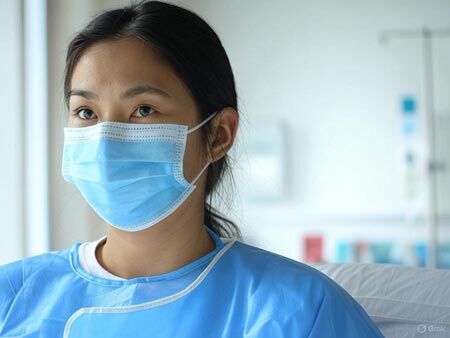The Yale 42 Decoding PVS After COVID Vaccination
February 19, 2025
Summary
This study looks at why some people feel sick for a long time after getting the COVID-19 vaccine, a condition called post-vaccination syndrome (PVS). Researchers compared 42 people with PVS to 22 healthy people. They found that PVS folks had fewer of some immune cells, more of others, and lower vaccine antibodies because they got fewer shots. They also had the virus’s Spike protein in their blood much longer—up to 709 days—and signs of an old virus (EBV) waking up. This might explain their symptoms like tiredness and brain fog, but more research is needed.

Analysis
The Yale 42: Decoding PVS After COVID Vaccination
Immunological Insights into Post-Vaccination Syndrome: A Yale LISTEN Study
The preprint “Immunological and Antigenic Signatures Associated with Chronic Illnesses after COVID-19 Vaccination,” posted on medRxiv on February 18, 2025 (https://doi.org/10.1101/2025.02.18.25322379), presents a cross-sectional study from the Yale LISTEN initiative exploring post-vaccination syndrome (PVS), a rare, chronic condition reported by some individuals following COVID-19 vaccination. Conducted by researchers including Bornali Bhattacharjee and Akiko Iwasaki, the study compares 42 PVS participants with 22 healthy controls, all without pre-existing comorbidities, to identify immunological correlates of PVS. Although not peer-reviewed, this work offers hypotheses for further investigation into this poorly understood phenomenon.
Study Overview and Cohort
The research, spanning December 2022 to November 2023, involved participants from the LISTEN study, a decentralized effort recruiting via Hugo Health. PVS participants (29 female, 13 male) reported symptoms like fatigue (85%), exercise intolerance (80%), and brain fog (77.5%), often emerging within 10 days post-vaccination (median 4 days for any symptom, 10 for severe). Controls (11 male, 11 female) reported no adverse effects post-vaccination. Both groups received vaccines (Pfizer, Moderna, or J&J), but PVS participants averaged fewer doses (median 2 vs. 4). Approximately 35.7% of PVS and 45.5% of controls reported prior SARS-CoV-2 infection, with serological tests adjusting subgroup classifications: PVS-I (infection-naïve, n=15), PVS+I (infected, n=27), Control-I (n=11), and Control+I (n=11).
Immunological Findings
Flow cytometry revealed distinct immune profiles in PVS participants: reduced memory and effector CD4 T cells (e.g., CD4+ Tem, p=0.01), increased TNFα+ CD8 T cells (p<0.01), elevated non-classical monocytes (p=0.03), and decreased cDC2 dendritic cells (p=0.02). Antibody analyses showed lower anti-Spike IgG in PVS-I (p<0.01), correlating with fewer doses (Spearman’s ρ=0.85, p<0.01), and a decline over time post-vaccination (ρ=-0.87, p<0.01). Notably, PVS participants exhibited higher circulating SARS-CoV-2 Spike protein (S1 and full-length S) levels, detectable up to 709 days post-exposure (p=0.01), unlike controls’ bimodal distribution. This persistence echoes findings in long COVID and suggests a potential role in chronic symptoms.
Epstein-Barr Virus and Autoantibodies
Serological evidence pointed to recent Epstein-Barr Virus (EBV) reactivation in PVS, with elevated anti-gp42 antibodies (p<0.01) and peptide reactivities (e.g., gp42 [VI]XLPHW, p<0.01), correlating with TNFα+ CD8 T cells (R=0.47, p<0.01). Autoantibody profiling identified increased IgM (65 antigens) and IgA (39 antigens) reactivities in PVS, notably anti-nucleosome IgM and anti-AQP4 IgA (p<0.01), hinting at autoimmune contributions. Controls showed higher IgG reactivities (18 antigens), like anti-histone H1 (p<0.01).
Machine Learning Insights
Using LASSO with nested cross-validation, the study achieved 78.1% accuracy (AUC=0.80) in distinguishing PVS from controls, identifying 21 predictive features, including reduced CD4 T cell subsets, lower immune modulators (e.g., fetuin A, neurotensin), and elevated TNFα+ CD8 T cells and anti-EBV gp42 IgG. Figure 6B’s t-SNE plot visually clusters PVS and control samples, highlighting immune divergence despite some overlap (see below).
Discussion and Implications
The findings suggest PVS involves immune dysregulation—reduced adaptive immunity, persistent Spike protein, EBV reactivation, and autoantibodies—distinct yet overlapping with long COVID. Limitations include small sample size, lack of genetic analysis, and untested co-infections, necessitating replication. This study, while exploratory, underscores the need to refine vaccine safety profiles and support affected individuals, offering a foundation for future diagnostic and therapeutic research.
The article “The Yale 42 Decoding PVS After COVID Vaccination” was posted on March 5, 2025.
Return to Home
